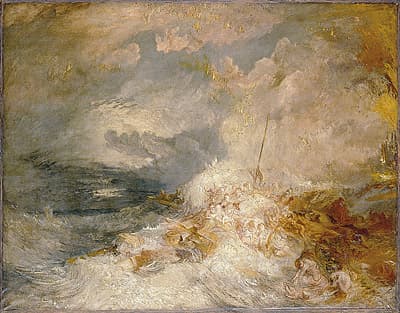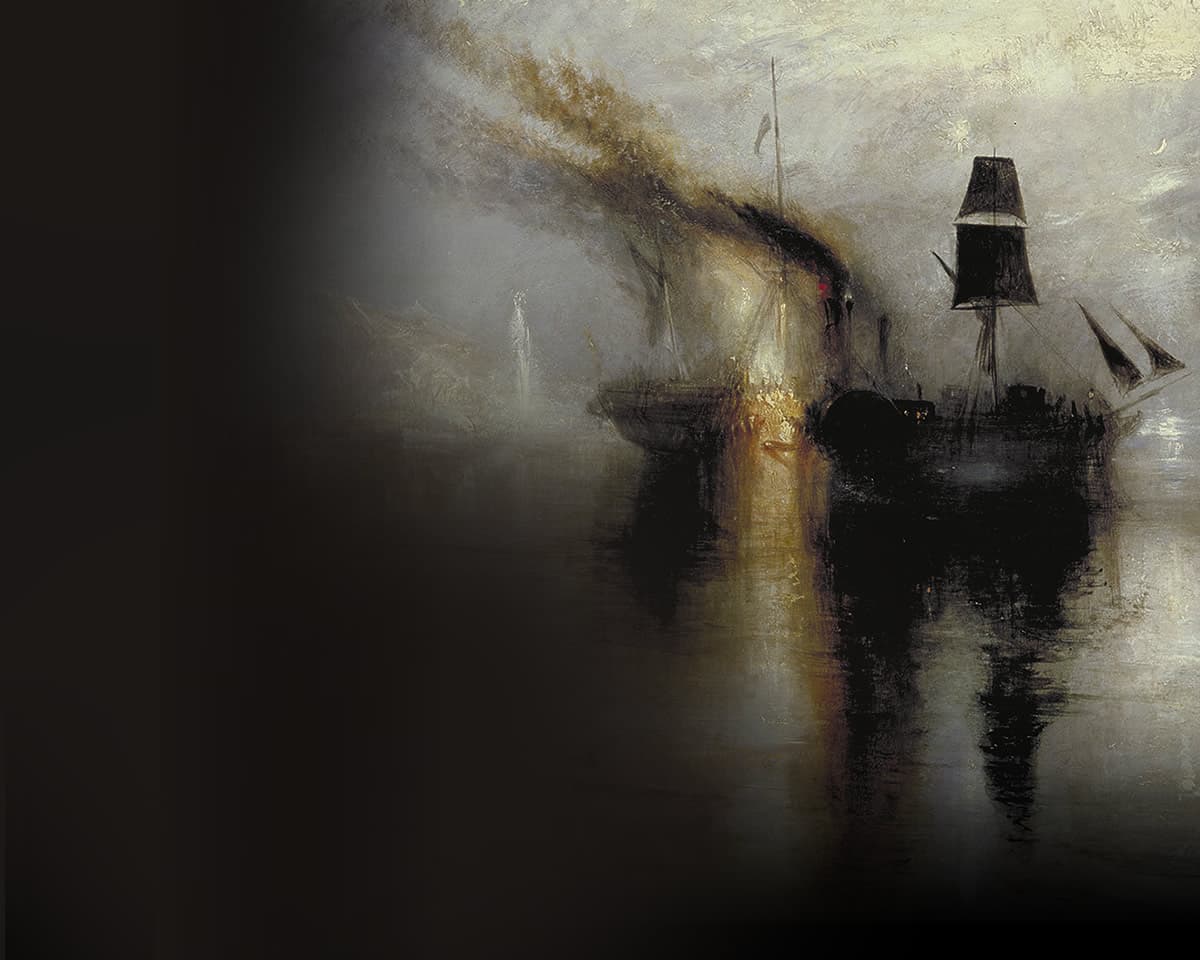
J M W
TURNER
Great Britain
1775
–
1851
171.4 (h) x 220.3 (w) cm Tate Accepted by the nation as part of the Turner Bequest 1856 Photo: © Tate 2013
This is one of Turner’s most dramatic canvases on the theme of maritime disaster. In the flurry of white, gold and umber paint is a tangle of bodies, sea spume and wreckage. The single upright is a mast held defiantly and valiantly aloft by puny figures. The was a transport convict ship wrecked off the French coast near Boulogne in 1833. It caused a scandal because the ship’s captain refused French help to save the women and children: he claimed he was only authorised to land them in New South Wales, so they all drowned.
This is one of Turner’s most dramatic canvases on the theme of maritime disaster. In the flurry of white, gold and umber paint is a tangle of bodies, sea spume and wreckage. The single upright is a mast held defiantly and valiantly aloft by puny figures. The was a transport convict ship wrecked off the French coast near Boulogne in 1833. It caused a scandal because the ship’s captain refused French help to save the women and children: he claimed he was only authorised to land them in New South Wales, so they all drowned.
This is one of Turner’s most dramatic canvases on the theme of maritime disaster. In the flurry of white, gold and umber paint is a tangle of bodies, sea spume and wreckage. The single upright is a mast held defiantly and valiantly aloft by puny figures. The was a transport convict ship wrecked off the French coast near Boulogne in 1833. It caused a scandal because the ship’s captain refused French help to save the women and children: he claimed he was only authorised to land them in New South Wales, so they all drowned.

